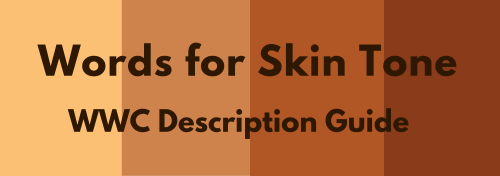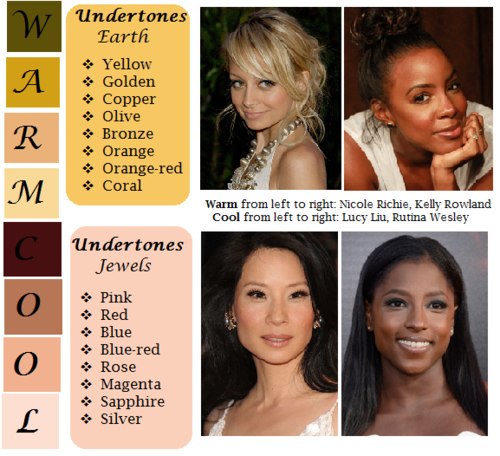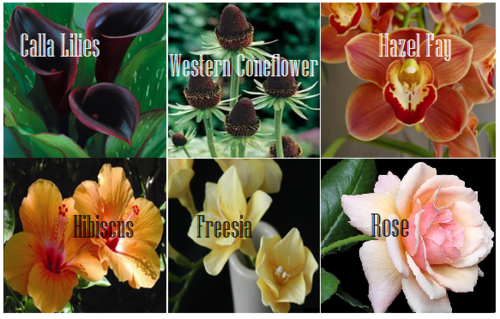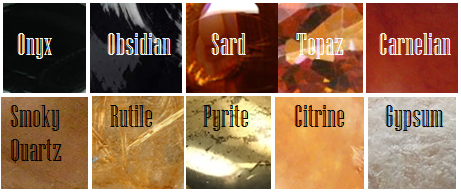Quandrixing - Quandrixing






More Posts from Quandrixing and Others

This is potentially life saving information everyone should know.

🤍 My Dragon Age Inquisition Modlist 🤍
Just in time for a last minute playthrough of DAI before Veilguard comes out! 😆
I would say this is a light modlist (less then 30 mods), vanilla friendly, and doesn't completely trivialize progression & combat (in regard to qual of life mods). The list is mostly CC improvements, armor additions or edits, and essential quality of life mods. And all of these mods are compatible with the DLCs (yes even Trespasser haha!)
I have only played as a female Dalish Elf so a couple mods are tailored to that :) Also, I added a link to the bottom of the list to the Free Cam tool I use for Inquisition!
I use the Frosty Mod Manager
The Modlist:
Favorite Hair Mods
Misc Hairstyles for Frosty Anto Hairstyles Hairstyle Day CaffeinePainter's NPC Hairstyles for Inquisitor
Other CC Improvements
SOS Brows on Fleek HD Eye Textures -> I also like: Eye Candy Textures Scalp Edit for Frosty (use if your hairstyle has prominent sideburns)
Armor & Clothing
Surcoat of the Tirashan - EF Outfit Elf Pajama Replacers Invisible Starting Armor (Frosty Compatible File) Flowery Outerwear Unique Wedding Dress for HF & EF The Core of Her Heart - A Morrigan Mod (Clothing Edit) Cullen of Ferelden (Armor retexture) Lady Ambassador - Josephine Outfit Inquisition Branded Finery -> I also like: Halamshiral Finery Remake 4k
Quality of Life Improvements
Party Banter Tweaks (I use the 2-5 min version) Faster Movement Speed (I use +50% for combat only) Shorter War Table Missions (I use -50%) Don't Break My Stride
Miscellaneous
Party at the Winter Palace DAI Frosty Texture Glitch Fixes Modded Hairs in DLCs Solas Halamshiral Hat & Neck Clipping Fix Dalish Glass New Painted Portraits by CaffeinePainter Stone-Stalker Blade Appearance Fix
DAI Free Cam: Otis Camera Tools
I place my CC mods at the top of my load order and my fixes and qual of life mods at the bottom so nothing overrides those essentials. I've ran this list with no crashes or infinite load screens :)
Remember to read mod descriptions & to download all mod requirements!! 🤍

Just a quick note from your friendly neighborhood bookworm/indie author
if you use kindle for the majority of your library, they will be shutting down the function that allows you to download your files and transfer them via USB on the 26th of February. Which doesn't sound like a huge deal, but this also means that if a book is taken off Amazon for any reason—like it being banned—they can scrape it off your kindle as well. So maybe backup your library?
i think i’ve said it before but ✨✨𝓵𝓲𝓰𝓱𝓽𝓲𝓷𝓰✨✨ progress vid for the adoption comic! tip link in source <3
hi have a nice day! this is the reminder for you to share your ublock extension that blocks AI stuff from showing up. sorry if this annoys you and doubly sorry if you already shared it (truly my bad if that's the case)
I'm not one of the people involved in the post I'm just really interested in never seeing an AI generated image again
thanks in advance! sorry!
oh, no, you're fine, i completely forgot lmao
its this

Words for Skin Tone | How to Describe Skin Color

We discussed the issues describing People of Color by means of food in Part I of this guide, which brought rise to even more questions, mostly along the lines of “So, if food’s not an option, what can I use?” Well, I was just getting to that!
This final portion focuses on describing skin tone, with photo and passage examples provided throughout. I hope to cover everything from the use of straight-forward description to the more creatively-inclined, keeping in mind the questions we’ve received on this topic.
Standard Description
Basic Colors

Pictured above: Black, Brown, Beige, White, Pink.
“She had brown skin.”
This is a perfectly fine description that, while not providing the most detail, works well and will never become cliché.
Describing characters’ skin as simply brown or beige works on its own, though it’s not particularly telling just from the range in brown alone.
Complex Colors
These are more rarely used words that actually “mean” their color. Some of these have multiple meanings, so you’ll want to look into those to determine what other associations a word might have.

Pictured above: Umber, Sepia, Ochre, Russet, Terra-cotta, Gold, Tawny, Taupe, Khaki, Fawn.
Complex colors work well alone, though often pair well with a basic color in regards to narrowing down shade/tone.
For example: Golden brown, russet brown, tawny beige…
As some of these are on the “rare” side, sliding in a definition of the word within the sentence itself may help readers who are unfamiliar with the term visualize the color without seeking a dictionary.
“He was tall and slim, his skin a russet, reddish-brown.”
Comparisons to familiar colors or visuals are also helpful:
“His skin was an ochre color, much like the mellow-brown light that bathed the forest.”
Modifiers
Modifiers, often adjectives, make partial changes to a word.The following words are descriptors in reference to skin tone.
Dark - Deep - Rich - Cool
Warm - Medium - Tan
Fair - Light - Pale
Rich Black, Dark brown, Warm beige, Pale pink…
If you’re looking to get more specific than “brown,” modifiers narrow down shade further.
Keep in mind that these modifiers are not exactly colors.
As an already brown-skinned person, I get tan from a lot of sun and resultingly become a darker, deeper brown. I turn a pale, more yellow-brown in the winter.
While best used in combination with a color, I suppose words like “tan” “fair” and “light” do work alone; just note that tan is less likely to be taken for “naturally tan” and much more likely a tanned White person.
Calling someone “dark” as description on its own is offensive to some and also ambiguous. (See: Describing Skin as Dark)
Undertones
Undertones are the colors beneath the skin, seeing as skin isn’t just one even color but has more subdued tones within the dominating palette.

pictured above: warm / earth undertones: yellow, golden, copper, olive, bronze, orange, orange-red, coral | cool / jewel undertones: pink, red, blue, blue-red, rose, magenta, sapphire, silver.
Mentioning the undertones within a character’s skin is an even more precise way to denote skin tone.
As shown, there’s a difference between say, brown skin with warm orange-red undertones (Kelly Rowland) and brown skin with cool, jewel undertones (Rutina Wesley).
“A dazzling smile revealed the bronze glow at her cheeks.”
“He always looked as if he’d ran a mile, a constant tinge of pink under his tawny skin.”
Standard Description Passage
“Farah’s skin, always fawn, had burned and freckled under the summer’s sun. Even at the cusp of autumn, an uneven tan clung to her skin like burrs. So unlike the smooth, red-brown ochre of her mother, which the sun had richened to a blessing.”
-From my story “Where Summer Ends” featured in Strange Little Girls
Here the state of skin also gives insight on character.
Note my use of “fawn” in regards to multiple meaning and association. While fawn is a color, it’s also a small, timid deer, which describes this very traumatized character of mine perfectly.
Though I use standard descriptions of skin tone more in my writing, at the same time I’m no stranger to creative descriptions, and do enjoy the occasional artsy detail of a character.
Creative Description
Whether compared to night-cast rivers or day’s first light…I actually enjoy seeing Characters of Colors dressed in artful detail.
I’ve read loads of descriptions in my day of white characters and their “smooth rose-tinged ivory skin”, while the PoC, if there, are reduced to something from a candy bowl or a Starbucks drink, so to actually read of PoC described in lavish detail can be somewhat of a treat.
Still, be mindful when you get creative with your character descriptions. Too many frills can become purple-prose-like, so do what feels right for your writing when and where. Not every character or scene warrants a creative description, either. Especially if they’re not even a secondary character.
Using a combination of color descriptions from standard to creative is probably a better method than straight creative. But again, do what’s good for your tale.
Natural Settings - Sky

Pictured above: Harvest Moon -Twilight, Fall/Autumn Leaves, Clay, Desert/Sahara, Sunlight - Sunrise - Sunset - Afterglow - Dawn- Day- Daybreak, Field - Prairie - Wheat, Mountain/Cliff, Beach/Sand/Straw/Hay.
Now before you run off to compare your heroine’s skin to the harvest moon or a cliff side, think about the associations to your words.
When I think cliff, I think of jagged, perilous, rough. I hear sand and picture grainy, yet smooth. Calm. mellow.
So consider your character and what you see fit to compare them to.
Also consider whose perspective you’re describing them from. Someone describing a person they revere or admire may have a more pleasant, loftier description than someone who can’t stand the person.
“Her face was like the fire-gold glow of dawn, lifting my gaze, drawing me in.”
“She had a sandy complexion, smooth and tawny.”
Even creative descriptions tend to draw help from your standard words.
Flowers

Pictured above: Calla lilies, Western Coneflower, Hazel Fay, Hibiscus, Freesia, Rose
It was a bit difficult to find flowers to my liking that didn’t have a 20 character name or wasn’t called something like “chocolate silk” so these are the finalists.
You’ll definitely want to avoid purple-prose here.
Also be aware of flowers that most might’ve never heard of. Roses are easy, as most know the look and coloring(s) of this plant. But Western coneflowers? Calla lilies? Maybe not so much.
“He entered the cottage in a huff, cheeks a blushing brown like the flowers Nana planted right under my window. Hazel Fay she called them, was it?”
Assorted Plants & Nature

Pictured above: Cattails, Seashell, Driftwood, Pinecone, Acorn, Amber
These ones are kinda odd. Perhaps because I’ve never seen these in comparison to skin tone, With the exception of amber.
At least they’re common enough that most may have an idea what you’re talking about at the mention of “pinecone.“
I suggest reading out your sentences aloud to get a better feel of how it’ll sounds.
"Auburn hair swept past pointed ears, set around a face like an acorn both in shape and shade.”
I pictured some tree-dwelling being or person from a fantasy world in this example, which makes the comparison more appropriate.
I don’t suggest using a comparison just “cuz you can” but actually being thoughtful about what you’re comparing your character to and how it applies to your character and/or setting.
Wood

Pictured above: Mahogany, Walnut, Chestnut, Golden Oak, Ash
Wood can be an iffy description for skin tone. Not only due to several of them having “foody” terminology within their names, but again, associations.
Some people would prefer not to compare/be compared to wood at all, so get opinions, try it aloud, and make sure it’s appropriate to the character if you do use it.
“The old warlock’s skin was a deep shade of mahogany, his stare serious and firm as it held mine.”
Metals

Pictured above: Platinum, Copper, Brass, Gold, Bronze
Copper skin, brass-colored skin, golden skin…
I’ve even heard variations of these used before by comparison to an object of the same properties/coloring, such as penny for copper.
These also work well with modifiers.
“The dress of fine white silks popped against the deep bronze of her skin.”
Gemstones - Minerals

Pictured above: Onyx, Obsidian, Sard, Topaz, Carnelian, Smoky Quartz, Rutile, Pyrite, Citrine, Gypsum
These are trickier to use. As with some complex colors, the writer will have to get us to understand what most of these look like.
If you use these, or any more rare description, consider if it actually “fits” the book or scene.
Even if you’re able to get us to picture what “rutile” looks like, why are you using this description as opposed to something else? Have that answer for yourself.
“His skin reminded her of the topaz ring her father wore at his finger, a gleaming stone of brown, mellow facades.”
Physical Description
Physical character description can be more than skin tone.
Show us hair, eyes, noses, mouth, hands…body posture, body shape, skin texture… though not necessarily all of those nor at once.
Describing features also helps indicate race, especially if your character has some traits common within the race they are, such as afro hair to a Black character.
How comprehensive you decide to get is up to you. I wouldn’t overdo it and get specific to every mole and birthmark. Noting defining characteristics is good, though, like slightly spaced front teeth, curls that stay flopping in their face, hands freckled with sunspots…
General Tips
Indicate Race Early: I suggest indicators of race be made at the earliest convenience within the writing, with more hints threaded throughout here and there.
Get Creative On Your Own: Obviously, I couldn’t cover every proper color or comparison in which has been “approved” to use for your characters’ skin color, so it’s up to you to use discretion when seeking other ways and shades to describe skin tone.
Skin Color May Not Be Enough: Describing skin tone isn’t always enough to indicate someone’s ethnicity. As timeless cases with readers equating brown to “dark white” or something, more indicators of race may be needed.
Describe White characters and PoC Alike: You should describe the race and/or skin tone of your white characters just as you do your Characters of Color. If you don’t, you risk implying that White is the default human being and PoC are the “Other”).
PSA: Don’t use “Colored.” Based on some asks we’ve received using this word, I’d like to say that unless you or your character is a racist grandmama from the 1960s, do not call People of Color “colored” please.
Not Sure Where to Start? You really can’t go wrong using basic colors for your skin descriptions. It’s actually what many people prefer and works best for most writing. Personally, I tend to describe my characters using a combo of basic colors + modifiers, with mentions of undertones at times. I do like to veer into more creative descriptions on occasion.
Want some alternatives to “skin” or “skin color”? Try: Appearance, blend, blush, cast, coloring, complexion, flush, glow, hue, overtone, palette, pigmentation, rinse, shade, sheen, spectrum, tinge, tint, tone, undertone, value, wash.
Skin Tone Resources
List of Color Names
The Color Thesaurus
Skin Undertone & Color Matching
Tips and Words on Describing Skin
Photos: Undertones Described (Modifiers included)
Online Thesaurus (try colors, such as “red” & “brown”)
Don’t Call me Pastries: Creative Skin Tones w/ pics I
Writing & Description Guides
WWC Featured Description Posts
WWC Guide: Words to Describe Hair
Writing with Color: Description & Skin Color Tags
7 Offensive Mistakes Well-intentioned Writers Make
I tried to be as comprehensive as possible with this guide, but if you have a question regarding describing skin color that hasn’t been answered within part I or II of this guide, or have more questions after reading this post, feel free to ask!
~ Mod Colette
My sister rang me today.
Ever since she was six, she's had pain in her legs, which turns into pain in her hips and back for stretches of time. She's tried for years to get a diagnosis, with absolutely no joy. As a kid they thought she had collapsed arches in her feet; then it became clear her feet were fine, but something was wrong with her tendons; and then in her 20s they just shrugged it off with a "We'll never know probably" and that was that. She keeps on top of it with daily yoga, generally, though flare ups happen periodically. If she has to pause the yoga for some reason, she fairly rapidly regresses. Currently she has plantar fascitis again, which has halted everything once more, so right now she's back into a pain slump.
Anyway, she called me today while going from Doctors to pharmacy to get the codeine they've prescribed her for it.
"I think one of my yoga moves to help the fascitis might have exacerbated the legs," she said. "Trouble is, there's never been a diagnosis. I just have to trial and error what might help."
... And I had one of those lightbulb moments, you know? My brain suddenly went "Wait hang on, this is very familiar isn't it?" and rang the bells of memory.
"Did they ever test you for fibromyalgia?" I said.
They had not. It's never been suggested, even. My sister said she'd look up the symptoms and see if it chimed, and rang off.
Fifteen minutes later, she calls back.
Turns out she got to the pharmacy and gave them the prescription. While waiting, she googled fibromyalgia symptoms and found the NHS website.
"It was like someone had written a profile of me," she tells me on the phone. "Like, spookily, scarily accurate to me, right down to the temperature regulation bit. It felt like a practical joke."
And of course, as she stood there in the pharmacy, suddenly staring at the age of forty at the apparent answer she's been trying to get since she was six years old, she burst into tears.
"Oh no!" Said the pharmacist, hurdling the counter in a single leap and scattering the queue (I am exaggerating for humorous affectation.) "Quickly! Come into our little exam room, we'll get you tissues and water!"
My sister was duly ensconced into a Safe Place, and encouraged to cry it out. It took several hiccuping minutes, but finally, she managed to calm down and get back to an Extremely Watery Smile.
"Do you want to talk about it?" the pharmacist asked sympathetically.
"It's just..." my sister said, overwhelmed and searching for words. "My whole life I've been in pain, and they've never found why..."
"Ah," said the pharmacist thoughtfully. "Have you explored fibromyalgia?"
...
"TWICE IN ONE DAY," my sister yells on the phone to me later. "HOW THE HELL HAVE TWO SEPARATE PEOPLE ON THE SAME DAY FINALLY GIVEN ME THE ANSWER, AND NEITHER OF YOU IS A DOCTOR"
Anyway she has a doctor's appointment for tomorrow to discuss it, so we'll see
-
 basilicaofbeasts reblogged this · 1 week ago
basilicaofbeasts reblogged this · 1 week ago -
 rococospade-main liked this · 1 week ago
rococospade-main liked this · 1 week ago -
 rabidogbite reblogged this · 1 week ago
rabidogbite reblogged this · 1 week ago -
 rabidogbite liked this · 1 week ago
rabidogbite liked this · 1 week ago -
 imnotusedtobeingloved liked this · 2 weeks ago
imnotusedtobeingloved liked this · 2 weeks ago -
 four-am-but-gayer liked this · 2 weeks ago
four-am-but-gayer liked this · 2 weeks ago -
 pluviatrix-talks-too-much reblogged this · 2 weeks ago
pluviatrix-talks-too-much reblogged this · 2 weeks ago -
 jacqjohnsonart liked this · 2 months ago
jacqjohnsonart liked this · 2 months ago -
 thesongofacagedbird reblogged this · 2 months ago
thesongofacagedbird reblogged this · 2 months ago -
 pineapplesinregalia liked this · 2 months ago
pineapplesinregalia liked this · 2 months ago -
 eolasesayelan reblogged this · 2 months ago
eolasesayelan reblogged this · 2 months ago -
 eolasesayelan liked this · 2 months ago
eolasesayelan liked this · 2 months ago -
 crazy-hazy-sims liked this · 2 months ago
crazy-hazy-sims liked this · 2 months ago -
 wolfmoonwildflowers reblogged this · 2 months ago
wolfmoonwildflowers reblogged this · 2 months ago -
 wolfmoonwildflowers liked this · 2 months ago
wolfmoonwildflowers liked this · 2 months ago -
 dustdeepsea reblogged this · 2 months ago
dustdeepsea reblogged this · 2 months ago -
 llamatheodd liked this · 2 months ago
llamatheodd liked this · 2 months ago -
 cattles-bians liked this · 3 months ago
cattles-bians liked this · 3 months ago -
 lazy-cat69 liked this · 3 months ago
lazy-cat69 liked this · 3 months ago -
 allaboutthatlucy reblogged this · 3 months ago
allaboutthatlucy reblogged this · 3 months ago -
 unmoderatedzhentarim liked this · 3 months ago
unmoderatedzhentarim liked this · 3 months ago -
 n1ghtmeri liked this · 3 months ago
n1ghtmeri liked this · 3 months ago -
 eolasesayelan reblogged this · 3 months ago
eolasesayelan reblogged this · 3 months ago -
 oni-ino reblogged this · 4 months ago
oni-ino reblogged this · 4 months ago -
 oni-ino liked this · 4 months ago
oni-ino liked this · 4 months ago -
 julesrefs reblogged this · 4 months ago
julesrefs reblogged this · 4 months ago -
 rai-draws-stuff liked this · 4 months ago
rai-draws-stuff liked this · 4 months ago -
 death-ray-of-sunshine liked this · 4 months ago
death-ray-of-sunshine liked this · 4 months ago -
 molteart reblogged this · 4 months ago
molteart reblogged this · 4 months ago -
 deputyrook liked this · 4 months ago
deputyrook liked this · 4 months ago -
 kezzdaddy reblogged this · 4 months ago
kezzdaddy reblogged this · 4 months ago -
 kezzdaddy liked this · 4 months ago
kezzdaddy liked this · 4 months ago -
 buckynats liked this · 4 months ago
buckynats liked this · 4 months ago -
 lungguppies liked this · 5 months ago
lungguppies liked this · 5 months ago -
 rozarens reblogged this · 5 months ago
rozarens reblogged this · 5 months ago -
 fierystarling liked this · 5 months ago
fierystarling liked this · 5 months ago -
 variablecemetery liked this · 5 months ago
variablecemetery liked this · 5 months ago -
 leda-deriva reblogged this · 5 months ago
leda-deriva reblogged this · 5 months ago -
 cynicalraccoon reblogged this · 5 months ago
cynicalraccoon reblogged this · 5 months ago -
 helldritch6211 liked this · 5 months ago
helldritch6211 liked this · 5 months ago -
 rnessfey liked this · 5 months ago
rnessfey liked this · 5 months ago -
 mexpineapple-blog reblogged this · 5 months ago
mexpineapple-blog reblogged this · 5 months ago -
 yin-390 reblogged this · 5 months ago
yin-390 reblogged this · 5 months ago -
 flokidokie liked this · 5 months ago
flokidokie liked this · 5 months ago -
 the-tiny-nerd liked this · 5 months ago
the-tiny-nerd liked this · 5 months ago -
 sentientdeskchair-blog liked this · 5 months ago
sentientdeskchair-blog liked this · 5 months ago






